
Crooked Tree Wildlife Sanctuary: A Haven for Bird Lovers and Nature Enthusiasts
Discover the Crooked Tree Wildlife Sanctuary in Belize, where bird watching, exotic wildlife, and rich local culture come together in a serene and picturesque setting.
Located in the heart of Belize, the Crooked Tree Wildlife Sanctuary is a treasure trove of biodiversity. Spread over 16,400 acres, this sanctuary is a paradise for bird watchers, housing over 300 species of birds. From the stunning Jabiru stork to the vibrant kingfishers, the sanctuary offers a mesmerizing bird-watching experience that is unparalleled. The sanctuary is also home to a variety of other wildlife, including howler monkeys, crocodiles, and iguanas. The network of lagoons, creeks, and swamps provides a thriving habitat for these creatures. Whether you choose to explore the sanctuary by boat or on foot, the serene surroundings and the rich tapestry of flora and fauna will leave you spellbound. A visit to the Crooked Tree Wildlife Sanctuary offers more than just wildlife. The Crooked Tree village, located within the sanctuary, is famous for its traditional Belizean hospitality. Here, you can interact with local villagers, taste delicious home-cooked meals, and even learn about the traditional ways of life. The sanctuary also hosts the annual Cashew Festival, a vibrant celebration featuring local music, dance, and, of course, cashew-based delicacies.
Local tips in Crooked Tree Wildlife Sanctuary
- Visit during the dry season (February to May) for the best bird-watching opportunities.
- Carry binoculars and a camera with a good zoom lens to capture stunning bird photos.
- Wear comfortable, lightweight clothing and bring mosquito repellent for the best experience.
- Try the local cashew wine, a unique beverage made in the Crooked Tree village.
- Hire a local guide to get the most out of your visit; they know the best spots for wildlife sightings.
Crooked Tree Wildlife Sanctuary: A Haven for Bird Lovers and Nature Enthusiasts
Located in the heart of Belize, the Crooked Tree Wildlife Sanctuary is a treasure trove of biodiversity. Spread over 16,400 acres, this sanctuary is a paradise for bird watchers, housing over 300 species of birds. From the stunning Jabiru stork to the vibrant kingfishers, the sanctuary offers a mesmerizing bird-watching experience that is unparalleled. The sanctuary is also home to a variety of other wildlife, including howler monkeys, crocodiles, and iguanas. The network of lagoons, creeks, and swamps provides a thriving habitat for these creatures. Whether you choose to explore the sanctuary by boat or on foot, the serene surroundings and the rich tapestry of flora and fauna will leave you spellbound. A visit to the Crooked Tree Wildlife Sanctuary offers more than just wildlife. The Crooked Tree village, located within the sanctuary, is famous for its traditional Belizean hospitality. Here, you can interact with local villagers, taste delicious home-cooked meals, and even learn about the traditional ways of life. The sanctuary also hosts the annual Cashew Festival, a vibrant celebration featuring local music, dance, and, of course, cashew-based delicacies.
When is the best time to go to Crooked Tree Wildlife Sanctuary?
Unmissable attractions to see
Xunantunich Mayan Ruins
Explore the ancient wonders of Xunantunich Mayan Ruins in Belize, a captivating archaeological site rich in history and breathtaking views.
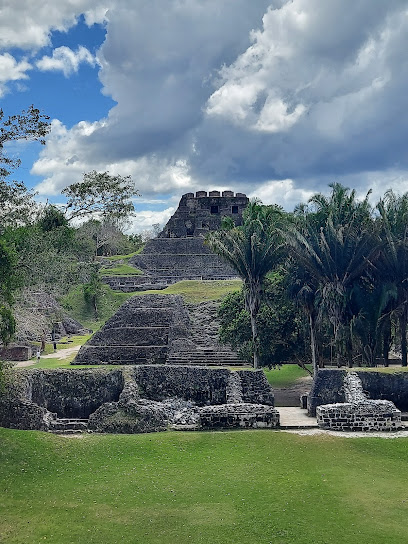
Fort Street Tourism Village
Experience the essence of Belize at Fort Street Tourism Village, a vibrant hub for shopping, dining, and cultural immersion in Belize City.

Digi Park
Experience the lush greenery and tranquility of Digi Park, a serene urban oasis in Belize City, perfect for relaxation and enjoying local cuisine.

Cahal Pech Archaeological Reserve
Discover the ancient Maya civilization at Cahal Pech Archaeological Reserve, a captivating blend of history and natural beauty in Belize.

The Belize Sign Monument
Discover the vibrant Belize Sign Monument, a cultural landmark and photo opportunity that embodies the spirit of Belize in beautiful Belize City.
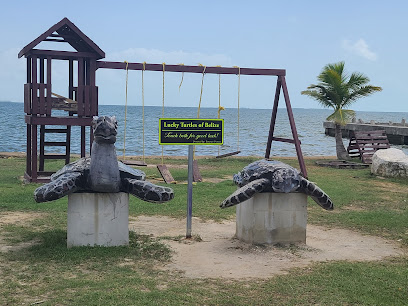
Rio On Pools
Explore the tranquil beauty of Rio On Pools, Belize's hidden gem with stunning natural pools and lush surroundings for an unforgettable adventure.

Museum of Belize
Discover the Museum of Belize and immerse yourself in the fascinating history and culture of this vibrant Caribbean nation.

Battlefield Park
Discover the charm of Battlefield Park, a serene oasis in Belize City, blending natural beauty with rich historical significance for all travelers.
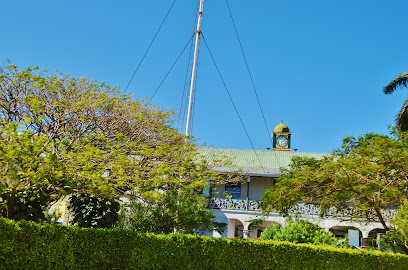
Baron Bliss lighthouse
Experience the allure of the Baron Bliss Lighthouse, a historic gem in Belize City offering stunning views and a glimpse into maritime history.

Mountain Pine Ridge Forest Reserve
Explore the majestic Mountain Pine Ridge Forest Reserve, a natural wonder in Belize with stunning waterfalls, diverse wildlife, and breathtaking trails.
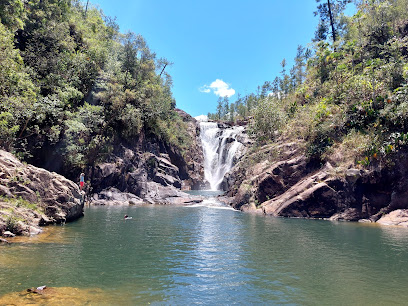
St. Herman's Blue Hole National Park
Explore the natural beauty and adventure of St. Herman's Blue Hole National Park, a serene escape into Belize's vibrant landscapes and captivating wildlife.

Actun Tunichil Muknal (ATM Cave)
Explore the breathtaking depths of Actun Tunichil Muknal, a mystical cave that unveils the ancient Maya civilization's secrets in stunning natural beauty.

St John Anglican Cathedral
Discover the historical beauty of St. John Anglican Cathedral, the oldest Anglican church in Central America, in the heart of Belize City.

Barton Creek Cave Reserve
Explore the enchanting Barton Creek Cave Reserve, where adventure meets history in the heart of Belize's stunning landscapes.

Green Iguana Conservation Project
Explore the Green Iguana Conservation Project in San Ignacio, Belize, where wildlife conservation meets educational adventure in a stunning natural setting.
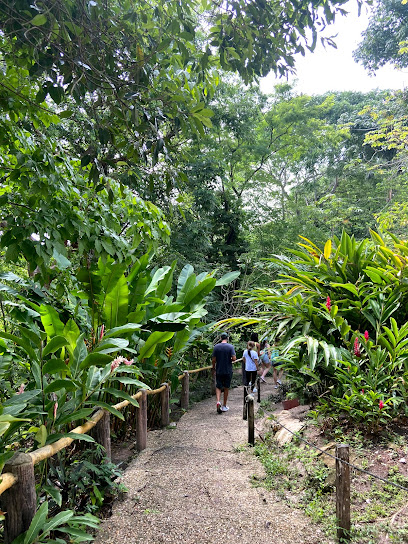
Essential places to dine
Bamboo Bites
Discover culinary bliss at Bamboo Bites in Crooked Tree—where local flavors meet warm hospitality in a picturesque setting.

Carrie's Kitchen
Experience authentic Belizean flavors at Carrie's Kitchen in Crooked Tree - a culinary gem offering delightful dishes and warm hospitality.

Mali & Jay Restaurant & Resort
Experience authentic Belizean cuisine in a serene setting at Mali & Jay Restaurant & Resort in Crooked Tree.

3Js Restaurant
Discover authentic Belizean cuisine amidst the serene beauty of Crooked Tree at 3Js Restaurant.

BYRON RESTAURANT AND BAR
Experience authentic Belizean cuisine at Byron Restaurant and Bar in Crooked Tree - where every dish tells a story.

Indian's Fast Food
Experience authentic Belizean flavors at Indian's Fast Food in Crooked Tree Village - where quick bites meet local culinary traditions.

Ava's Cooking Class
Discover the flavors of Belize at Ava's Cooking Class in Crooked Tree - an immersive culinary experience blending tradition with local ingredients.

Markets, malls and hidden boutiques
The Orange Gallery
Explore a vibrant collection of Belizean art, handcrafted furniture, and unique jewelry at The Orange Gallery along the George Price Highway.

George Wall General Store
Explore the essence of Shipyard at George Wall General Store, your go-to destination for local products and unique souvenirs.

Gerhard Krahn/Krahn family store
Explore the Gerhard Krahn Family Store in Shipyard for a unique shopping experience filled with local charm and treasures.

Jungle Gift Shop
Explore the vibrant Jungle Gift Shop in Belize City for unique local crafts, clothing, and memorable souvenirs that embody the spirit of Belize.

Golden Crops
Explore unique handcrafted items and local treasures at Golden Crops, a charming home goods store in Shipyard, Belize.

EJ’s Corner
Explore EJ’s Corner in Yo Creek for unique gifts, delicious coffee, and delightful ice cream, capturing the essence of Belizean culture.
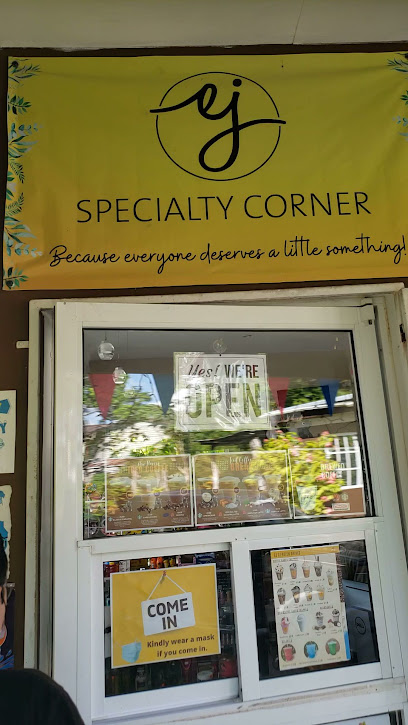
Gifts of Hope Belize
Explore the vibrant spirit of Belize at Gifts of Hope Belize, where unique handcrafted treasures await every visitor in Ladyville.

P G Store
Explore P G Store in Shipyard for affordable home goods and local groceries, perfect for tourists seeking quality and variety.

Belikin Store
Discover the essence of Belize at Belikin Store, your go-to gift shop for local treasures and souvenirs near the international airport.

Tanisha's Mayan Souvenir Shop
Explore Tanisha's Mayan Souvenir Shop for authentic Belizean crafts, handmade souvenirs, and a true taste of the Mayan culture in Rock Stone Pond.
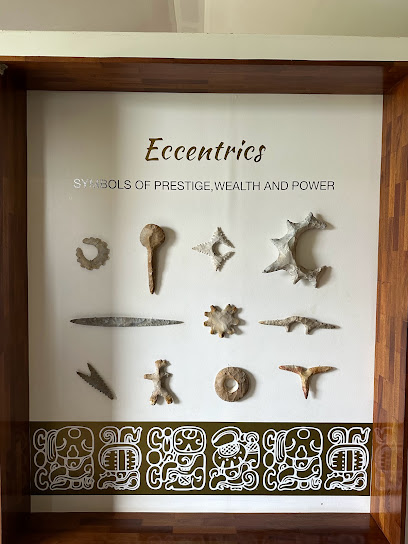
Manza's shop
Experience the authentic tastes of Belize at Manza's Shop, your local grocery store in Fire Burn, offering fresh produce and unique local delicacies.

Pocket Friendly gift shop & Cantuns Tools
Explore Pocket Friendly Gift Shop & Cantuns Tools in Orange Walk for unique souvenirs and local craftsmanship at affordable prices.

Kenn一Store
Discover the vibrant culture of Belize at Kenn一Store, a local gem in Crooked Tree Village offering unique handicrafts and souvenirs.

Women's Group Arts and Crafts
Explore the vibrant artistry and handcrafted treasures at Women's Group Arts and Crafts in Water Bank, a true reflection of local culture and creativity.

Co-op
Explore Co-op in Indian Creek for a taste of local culture and a treasure trove of unique goods to bring home.

Essential bars & hidden hideouts
Bird's Eye View Lodge & Tours
Experience the beauty of nature and hospitality at Bird's Eye View Lodge & Tours in the heart of Belize's Crooked Tree Village.

Crooked Tree Wildlife Sanctuary
Explore the rich biodiversity and serene landscapes of Crooked Tree Wildlife Sanctuary, Belize's premier destination for nature lovers and birdwatchers.

Beck's Bed & Breakfast
Discover the charm of Beck's Bed & Breakfast in Crooked Tree; a serene retreat for nature enthusiasts and culture seekers alike.

Bamboo Bites
Experience the authentic flavors of Belize at Bamboo Bites in Crooked Tree, where local cuisine meets warm hospitality.

Crooked Tree Lodge Belize C.A.
Discover the natural beauty and rich culture of Belize at Crooked Tree Lodge, a serene retreat for birdwatchers and nature lovers.

Jacana Inn
Experience serene accommodations and rich biodiversity at Jacana Inn in Crooked Tree, Belize – your gateway to nature and tranquility.

Mali & Jay Restaurant & Resort
Experience the flavors of Belize at Mali & Jay Restaurant & Resort, where local cuisine meets stunning natural beauty in Crooked Tree.

BYRON RESTAURANT AND BAR
Discover the authentic flavors of Belize at Byron Restaurant and Bar in Crooked Tree, a must-visit destination for food lovers.

Tillett's Village Lodge
Discover the serene beauty and vibrant culture of Crooked Tree at Tillett's Village Lodge, a budget-friendly haven for nature lovers and adventurers.

Ava's Cooking Class
Immerse yourself in Belizean culinary traditions with hands-on cooking classes at Ava's Cooking Class in Crooked Tree.

Audubon Society
Explore the Audubon Society in Crooked Tree - A Natural Haven for Wildlife and Birdwatching Enthusiasts.

Local Phrases about Crooked Tree Wildlife Sanctuary
-
- HelloHola
[ho-la] - GoodbyeAdiós
[a-di-ós] - YesSí
[sí] - NoNo
[no] - Please/You're welcomePor favor/De nada
[por fa-vor/de na-da] - Thank youGracias
[gra-cias] - Excuse me/SorryDisculpe/Perdón
[dis-cul-pe/per-dón] - How are you?¿Cómo estás?
[¿có-mo es-tás?] - Fine. And you?Bien. ¿Y tú?
[bien. ¿y tú?] - Do you speak English?¿Hablas inglés?
[¿ha-blas in-glés?] - I don't understandNo entiendo
[no en-tien-do]
- HelloHola
-
- I'd like to see the menu, pleaseMe gustaría ver el menú, por favor
[me gus-ta-ría ver el me-nú, por fa-vor] - I don't eat meatNo como carne
[no co-mo car-ne] - Cheers!¡Salud!
[¡sa-lud!] - I would like to pay, pleaseMe gustaría pagar, por favor
[me gus-ta-ría pa-gar, por fa-vor]
- I'd like to see the menu, pleaseMe gustaría ver el menú, por favor
-
- Help!¡Ayuda!
[¡a-yu-da!] - Go away!¡Vete!
[¡ve-te!] - Call the Police!¡Llama a la policía!
[¡ya-ma a la po-li-cía!] - Call a doctor!¡Llama a un médico!
[¡ya-ma a un mé-di-co!] - I'm lostEstoy perdido/a
[es-toy per-di-do/a] - I'm illEstoy enfermo/a
[es-toy en-fer-mo/a]
- Help!¡Ayuda!
-
- I'd like to buy...Me gustaría comprar...
[me gus-ta-ría com-prar...] - I'm just lookingSolo estoy mirando
[so-lo es-toy mi-ran-do] - How much is it?¿Cuánto cuesta?
[¿cúan-to cues-ta?] - That's too expensiveEso es demasiado caro
[e-so es de-ma-sia-do ca-ro] - Can you lower the price?¿Puede bajar el precio?
[¿pue-de ba-jar el pre-cio?]
- I'd like to buy...Me gustaría comprar...
-
- What time is it?¿Qué hora es?
[¿qué ho-ra es?] - It's one o'clockEs la una
[es la u-na] - Half past (10)Media (10)
[me-dia (10)] - MorningMañana
[ma-ña-na] - AfternoonTarde
[tar-de] - EveningNoche
[no-che] - YesterdayAyer
[a-yer] - TodayHoy
[hoy] - TomorrowMañana
[ma-ña-na] - 1Uno
[u-no] - 2Dos
[dos] - 3Tres
[tres] - 4Cuatro
[cua-tro] - 5Cinco
[cin-co] - 6Seis
[seis] - 7Siete
[sie-te] - 8Ocho
[o-cho] - 9Nueve
[nue-ve] - 10Diez
[diez]
- What time is it?¿Qué hora es?
-
- Where's a/the...?¿Dónde está...?
[¿dón-de es-tá...?] - What's the address?¿Cuál es la dirección?
[¿cúal es la di-rec-ción?] - Can you show me (on the map)?¿Puedes mostrarme (en el mapa)?
[¿pue-des mos-trar-me (en el ma-pa)?] - When's the next (bus)?¿Cuándo es el siguiente (autobús)?
[¿cuán-do es el si-guien-te (au-to-bús)?] - A ticket (to ....)Un boleto (a ....)
[un bo-le-to (a ....)]
- Where's a/the...?¿Dónde está...?
History of Crooked Tree Wildlife Sanctuary
-
Crooked Tree Wildlife Sanctuary is nestled in an area that was once influenced by the ancient Maya civilization. Archaeological evidence suggests that the area was used by the Maya for agriculture and trading, leveraging its abundant natural resources. The proximity to waterways allowed the Maya to establish trade routes, making the region an important hub in pre-Columbian Belize.
-
In the 17th and 18th centuries, British settlers arrived in Belize, attracted by its rich mahogany forests. Crooked Tree became an important site for logging camps, where the British extracted valuable timber. The community of Crooked Tree itself was established around this industry, with loggers and their families settling in the area.
-
The establishment of logging camps led to the formation of a vibrant Creole community in Crooked Tree. Descendants of African slaves who were brought to Belize by the British, the Creole people have contributed significantly to the cultural tapestry of the region. Their traditions, food, music, and language continue to shape the identity of Crooked Tree.
-
In 1984, recognizing the ecological significance of the area, the Belize Audubon Society established the Crooked Tree Wildlife Sanctuary. This was part of a broader movement to preserve Belize's unique ecosystems. The sanctuary was created to protect the diverse habitats that are home to numerous bird species, including the iconic Jabiru stork, as well as other wildlife.
-
In 2009, Crooked Tree Wildlife Sanctuary was added to UNESCO's Tentative List of World Heritage Sites. This recognition was due to its outstanding biodiversity and the sanctuary's role in conserving critical wetland habitats. The listing has helped to boost conservation efforts and raise international awareness about the importance of protecting such unique natural environments.
-
Today, Crooked Tree Wildlife Sanctuary is a model for successful conservation and eco-tourism. Efforts have been made to engage the local community in sustainable practices, ensuring that tourism benefits both the environment and the residents. Bird watching, fishing, and cultural tours are some of the activities that attract visitors, making it a vital part of Belize's eco-tourism industry.
Crooked Tree Wildlife Sanctuary Essentials
-
Crooked Tree Wildlife Sanctuary is located in the Belize District of Belize. The nearest airport is Philip S.W. Goldson International Airport (BZE), approximately 40 kilometers away. From the airport, you can rent a car or take a taxi directly to Crooked Tree Village, which is the gateway to the sanctuary. The drive typically takes about 45 minutes. Alternatively, you can take a bus from Belize City to Crooked Tree Village, which offers a more economical option.
-
Within Crooked Tree Wildlife Sanctuary, the primary mode of transportation is by foot or bicycle, allowing you to fully immerse yourself in the natural surroundings. Local taxis are available for trips to nearby areas. For exploring the sanctuary itself, many visitors opt for guided boat tours, which offer a unique perspective on the diverse wildlife and ecosystems. Renting a car is recommended if you plan to explore other parts of Belize.
-
The official currency in Belize is the Belize Dollar (BZD). While some establishments in Crooked Tree Village may accept US Dollars, it is advisable to carry Belize Dollars for smaller purchases. Credit cards are accepted in some lodges and restaurants, but cash is preferred, especially for local services and smaller vendors. ATMs are not readily available in Crooked Tree Village, so withdraw sufficient cash in Belize City or at the airport before arriving.
-
Crooked Tree Wildlife Sanctuary is generally a safe destination for tourists. However, it is advisable to take standard precautions such as avoiding isolated areas after dark and keeping an eye on your belongings. Belize City has areas with higher crime rates, particularly targeting tourists, so exercise extra caution if you plan to visit. Stick to well-populated and well-lit areas, and avoid displaying valuables.
-
In case of emergency, dial 911 for immediate assistance. The nearest medical facilities are located in Belize City, so it is recommended to have travel insurance that covers medical emergencies. For minor health issues, there are local clinics in nearby towns. It is also advisable to carry a basic first aid kit and any necessary medications. Be aware of your surroundings, especially when engaging in water-based activities.
-
Fashion: Do wear lightweight, breathable clothing suitable for a tropical climate. Avoid wearing flashy or revealing attire. Religion: Do respect local customs and traditions, including any spiritual or cultural practices you may encounter. Public Transport: Do be polite and respectful to drivers and fellow passengers. Don't expect the same punctuality as in more urban areas. Greetings: Do greet locals with a friendly 'Good morning' or 'Good afternoon.' Don't be overly formal. Eating & Drinking: Do try local dishes and accept food graciously. Don't waste food or refuse hospitality, as it is considered impolite.
-
To experience Crooked Tree Wildlife Sanctuary like a local, visit during the early morning or late afternoon when wildlife is most active. Engage with local guides who can offer in-depth knowledge about the area's flora and fauna. Don't miss the annual Cashew Festival, usually held in May, which celebrates the local cashew harvest with food, music, and cultural activities. For birdwatching enthusiasts, the sanctuary is a haven, especially during the migratory season from November to April.
Nearby Cities to Crooked Tree Wildlife Sanctuary
-
Things To Do in Belize City
-
Things To Do in Caye Caulker
-
Things To Do in San Pedro
-
Things To Do in Corozal Town
-
Things To Do in San Ignacio
-
Things To Do in Dangriga
-
Things To Do in Hopkins
-
Things To Do in Tikal
-
Things To Do in Placencia
-
Things To Do in Flores
-
Things To Do in Punta Gorda
-
Things To Do in Livingston
-
Things To Do in Puerto Cortés
-
Things To Do in Puerto Barrios
-
Things To Do in Rio Dulce









